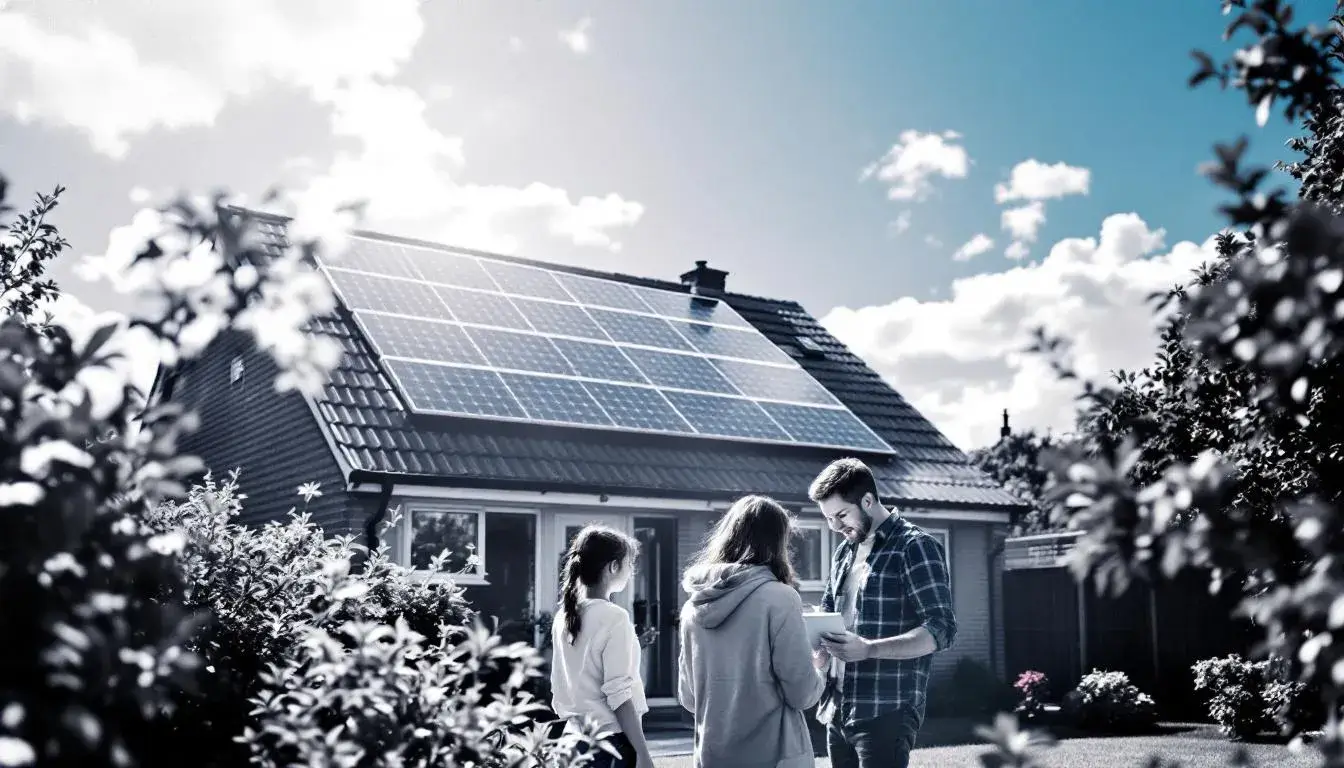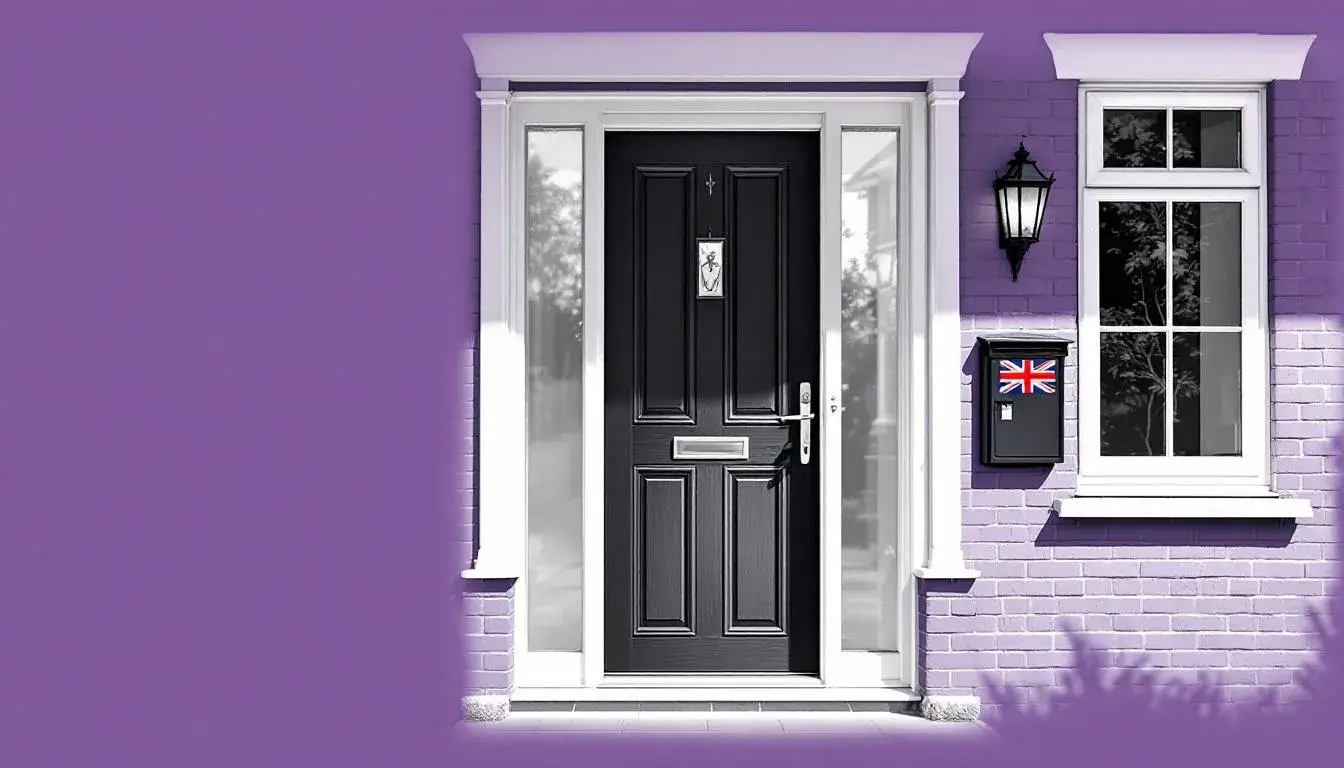
Offer Finance for Solar Installations

Why solar finance is a timely growth move
UK solar is experiencing a durable upturn. Average installed cost for a 4.5kW domestic system is about £9,800 in 2025 - typically including a modest battery - and regional payback can fall below a decade in sunnier areas such as the South East. Costs have fallen by more than 60% since 2010, and zero percent VAT on kit and installation runs until March 2027 across Great Britain, reducing upfront price tags and sharpening returns. At the same time, rising bills push households and businesses to seek predictable, lower-cost electricity.
Market momentum is equally persuasive. The UK surpassed 1.7 million solar installations in 2025, a 6.8% year-on-year rise, with total capacity at 18 GW and a solid growth trajectory to 2029. Government-backed schemes such as ECO4, Boiler Upgrade Scheme and regional grants have lifted certified residential installs by roughly a third in early 2025 compared with the prior year. Public investment initiatives and over 350 projects in development indicate a pipeline that underpins installer capacity and consumer confidence.
For finance providers, this environment reduces perceived risk. Falling technology costs and supportive policy reduce default risk by improving household cash flow post-installation. Stable policy signals and clearer 5-10 year return windows appeal to SMEs, where access to capital is usually possible but predictability is prized. The Smart Export Guarantee can add value by paying for exported surplus - modest reforms or fixed rates could improve cash flows further.
Understanding APR is not just about percentages - it is about what a borrower will pay in pounds and pence over time.
Position your offer to capture regional demand. The South East leads on volume and irradiance, but interest is nationwide. Tailor underwriting to roof suitability, property tenure, and installer quality, and build in protections around performance and warranties. Structure products so savings can outpace repayments for many borrowers, using the VAT relief and grants to keep monthly costs competitive with current bills. Done well, solar finance becomes a practical, confidence-inspiring route to energy independence for households and a cost-control tool for SMEs.
Who should consider this offering
This guide is for brokers, lenders and fintechs aiming to grow responsibly in home improvement and sustainability finance. If you serve UK homeowners in standard three-bed properties, the current price point and incentives make solar a bankable category. It is also relevant for SME-focused providers targeting retail, light industrial and office sites with predictable daytime usage. Property managers of social and private rented stock will find value in structuring portfolio solutions where grants and ECO4 can support outcomes. If you are an installer exploring embedded finance at point of sale, these models help you convert interest into funded orders without bloating acquisition costs.
Jargon made simple
System size (kW): Peak power output. A typical home uses around 4-5kW.
Battery storage (kWh): How much electricity can be stored for later use.
Payback period: Years until energy savings and export income repay the cost.
Levelised cost of energy (LCOE): Average cost per kWh over system lifetime.
SEG tariff: Payment for exporting surplus electricity to the grid.
EPC rating: Property energy performance certificate, sometimes linked to incentives.
MCS certification: Installer and product standard often required for grants and SEG.
PPA: Power purchase agreement used more by SMEs for off-balance-sheet supply.
Finance models you can deploy
Unsecured fixed-rate loan
Simple, fast credit decisioning. Terms 2-10 years. Works well at point of sale with soft-search pre-approval. Pair with early settlement flexibility.
Secured home improvement loan
Lower APR potential via property charge. Longer terms improve monthly affordability where payback runs 8-12 years.
Buy now, pay later with deferred start
Short deferral (3-12 months) lets savings accrue before repayments begin. Ensure transparency on post-deferral APR.
Merchant-subsidised APR
Installer contributes to lower displayed APR. Improves conversion without breaching affordability. Requires tight margin management.
Lease or PPA for SMEs
Off-balance-sheet or service-style agreements aligned to business cash flows. Useful where ownership and maintenance are outsourced.
Green loan with outcome triggers
Rate reductions on proof of generation or EPC uplift. Encourages quality installs and performance monitoring.
Numbers that matter at a glance
| Dimension | Typical Range UK 2025 | What to watch |
|---|---|---|
| Upfront cost (4.5kW + small battery) | ~£9,800 | VAT at 0% in GB until Mar 2027 |
| Payback period | 9.5-13 years | Shorter in South East and high-use homes |
| Annual bill savings | £500-£900 | Tariffs, usage patterns, battery sizing |
| SEG export income | £70-£200 | Export rate variability and marketing awareness |
| System lifetime | 20-30 years | Panel degradation and inverter replacements |
| Market growth | +6.8% YoY installs | Pipeline strength and installer capacity |
| Cost trend since 2010 | Down >60% | Recent inflation can nudge prices up |
| SME return horizon | 5-10 years | Policy stability and daytime load alignment |
Who is eligible and what lenders check
Most owner-occupiers with suitable roofs can qualify, subject to credit checks and property assessment. Lenders typically require MCS-certified installers and products to ensure grant eligibility and protect performance assumptions. Roof orientation, shading and structural condition influence viability and projected savings, which drive affordability assessments. Flats with shared roofs can be more complex unless a building-wide scheme is used. For SMEs, stable trading history, predictable daytime consumption and a site with minimal shading strengthen the case. Grants such as ECO4 and regional schemes can reduce the funded amount, but documentation must be gathered at application to prevent delays. In Great Britain, the zero percent VAT until March 2027 improves affordability calculations, while Northern Ireland pricing should reflect standard VAT. Tenants may proceed with landlord consent, and leasehold properties need freeholder approval for roof works. Always confirm SEG registration steps if export income is included in affordability.
From application to switch-on in simple steps
Pre-qualify borrower and property with soft credit check
Generate savings and payback quote using verified data
Confirm installer MCS credentials and product warranties
Apply for grants and confirm VAT treatment upfront
Issue conditional offer with transparent APR and fees
Arrange survey, final design, and installation schedule
Complete install, commissioning, and SEG registration
Activate loan, provide aftercare and performance monitoring
Advantages and trade-offs
| Pros | Cons |
|---|---|
| Lower upfront cost via finance and 0% VAT in GB | Savings depend on usage, location, roof suitability |
| Potential bill cuts that outpace repayments | Export rates can fluctuate under current SEG |
| Adds resilience against rising energy prices | Inverter replacement likely within system life |
| Grants can shorten payback significantly | Complexities for flats and leasehold permissions |
| Strong market and policy support in 2025 | Inflation may lift equipment and labour costs |
Before you proceed, sanity-check the assumptions
Stress-test the quote against conservative export rates and modest bill inflation. Validate roof shading and structural integrity before underwriting. Ensure the battery suits the household or business load profile rather than a one-size approach. Tie any promotional APR to installer quality and MCS compliance, with clear recourse for underperformance. Make certain borrowers understand early repayment terms, variable SEG income and maintenance responsibilities. For SMEs, model cash flow over 5-10 years, consider energy price scenarios, and check covenant impacts if choosing secured lending. Clarity now avoids disputes later.
If solar is not a fit today
Energy efficiency first: insulation, LED upgrades, smart heating controls to reduce demand.
Heat pump finance via the Boiler Upgrade Scheme to decarbonise heating loads.
Community solar or green tariffs to access renewable power without on-site installs.
Flexible business PPAs sourced from off-site projects for SMEs seeking price certainty.
Common questions answered
Q: How much does a typical home system cost in 2025? A: Around £9,800 for a 4.5kW system with a small battery in a three-bed home, with regional variation.
Q: How long until it pays back? A: Payback commonly ranges from 9.5 to 13 years, shorter in the South East and in homes with higher daytime use.
Q: Do grants and VAT relief really help? A: Yes. ECO4 and regional schemes can reduce upfront spend, and Great Britain has zero percent VAT on kit and installation until March 2027.
Q: What about export payments? A: The Smart Export Guarantee pays for surplus electricity. Rates vary by supplier. Better awareness and fixed-rate offers could lift returns further.
Q: Are prices still falling? A: Long-term costs have dropped more than 60% since 2010, though recent inflation has nudged prices up in some regions.
Q: Is this suitable for SMEs? A: Often yes. SMEs value policy stability and clear 5-10 year returns. Leases or PPAs can align costs with daytime usage and cash flow.
Ready to structure a compelling offer
Build products that keep monthly repayments near or below expected bill savings, lock in quality via MCS requirements, and pre-package grants and VAT treatment to cut friction. Equip sales teams with transparent APR examples and realistic payback ranges, then focus marketing in high-irradiance regions and among SMEs with daytime demand. Confidence comes from clarity.
Important information
This article is for information only and does not constitute financial advice. Incentives and tax treatment can change. Eligibility, APRs and terms depend on status and region. Always seek independent advice where appropriate.
Buy now, pay monthly
Buy now, pay monthly
Some of our incredible partners
Our partners have consistently achieved outstanding results. The numbers speak volumes. Be one of them!


MYA CLINICS LTD

COUNTRYSIDE LODGES LTD









